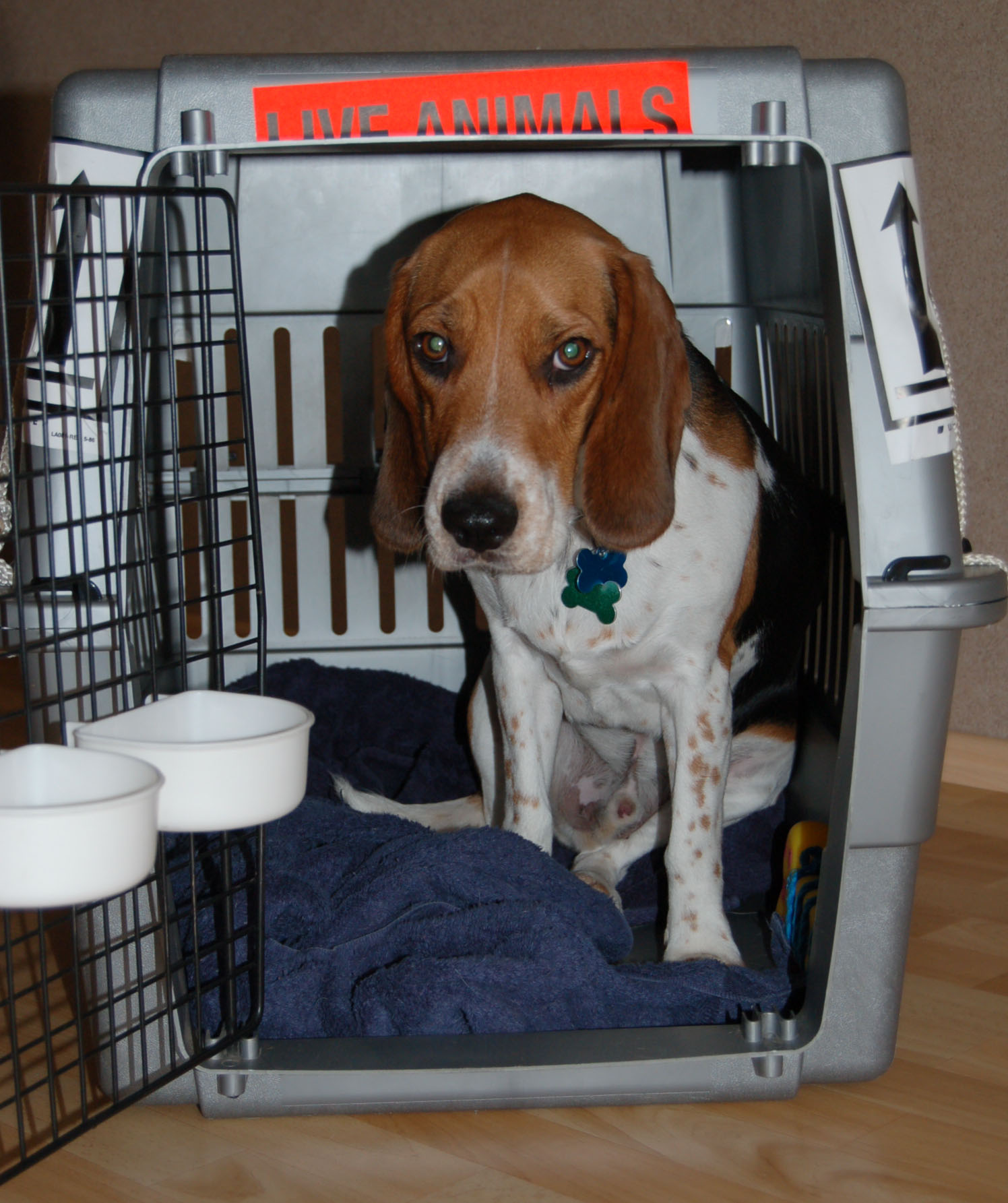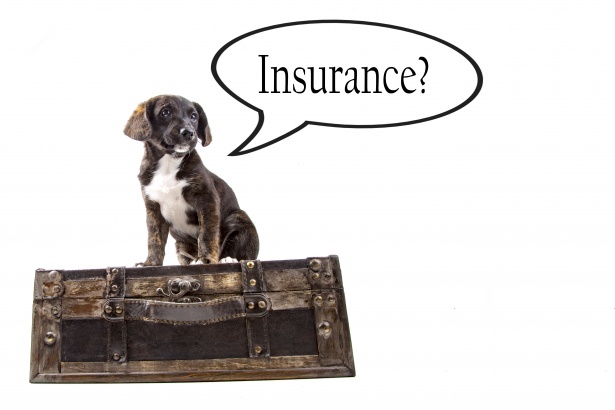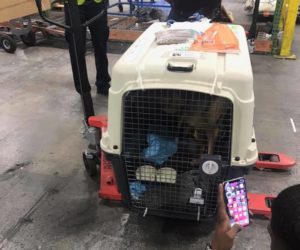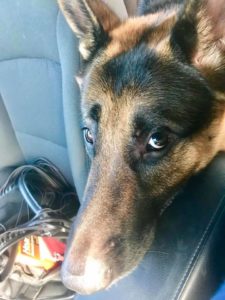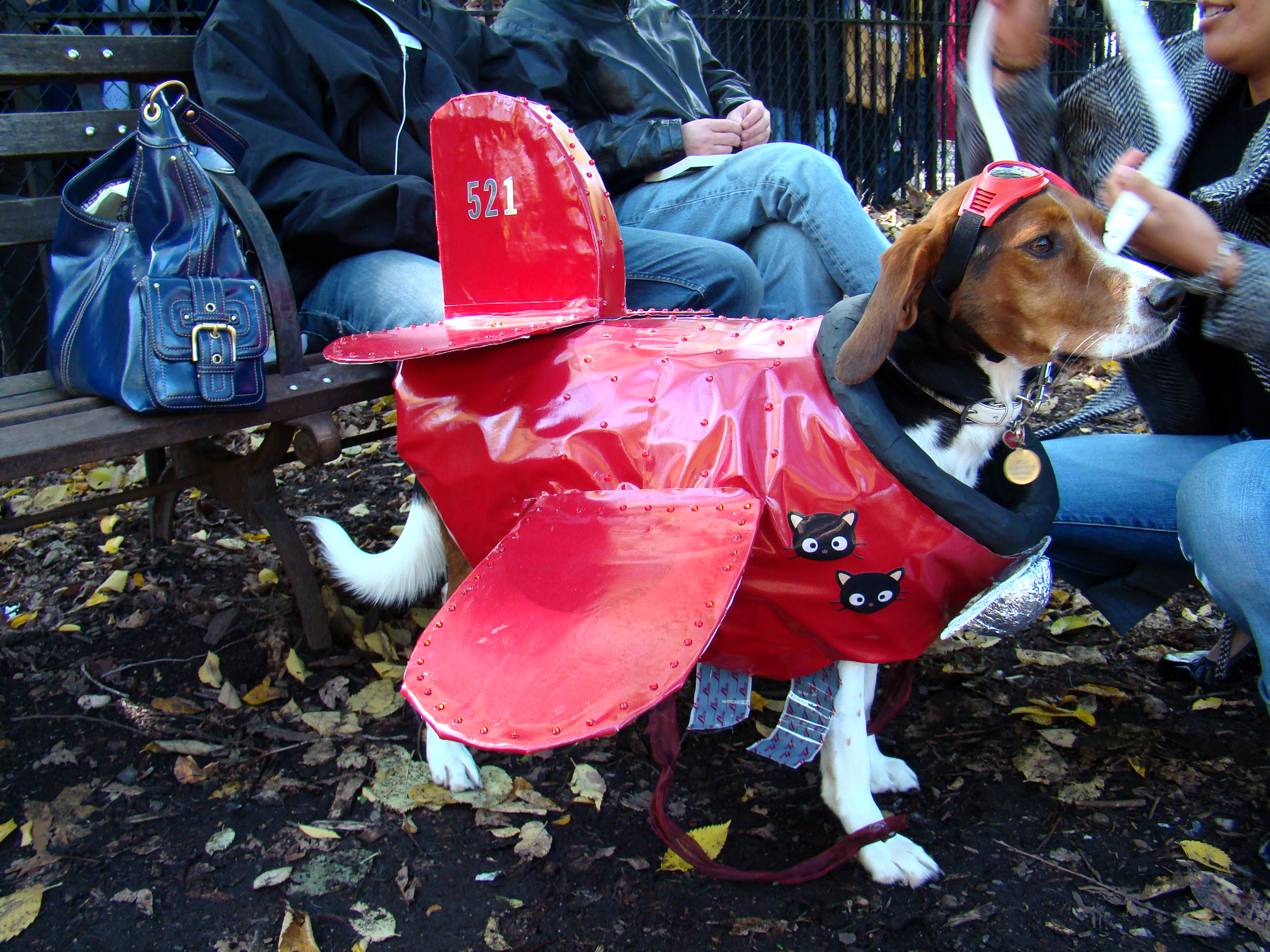How to Redo Kennel Training for a Traumatized Pet
We recently reported on a story about a woman whose dog was lost by American Airlines for a day in which the pet was locked inside its travel carrier for 24 hours. The dog was hungry, thirsty, and clearly stressed out, but in the days following this traumatic event, the pet continued to show a natural fear of the carrier. Unfortunately, this type of story isn’t that uncommon. Whether it happened while flying on a plane, sitting in a cargo facility, or even just at home, many animals will show a natural fear of their travel carrier. Rather than accepting that the pet will never be the same again, often times, the solution is to simply redo the kennel training with the traumatized pet.
- Get rid of the old carrier. This may not be necessary in every case, but if your pet continues to show considerable fear over the carrier, we recommend getting rid of it. In fact, we recommend doing it in front of the pet so they know it’s gone and isn’t coming back.
- Give the pet a transition period. Don’t bring a new kennel into the home right away. Ideally, you’ll have a yard, safe room in the house, or a dog-sitter that can look after the dog and the house if you’re working during the day. You likely don’t need to wait so long that the dog loses all memory of what it’s like to be in a kennel. A week or two should hopefully be sufficient so that the pet is no longer so overwhelmed that it won’t even approach the new carrier.
- Introduce a new crate. Don’t rush it, especially at first, but leave the door open and let the pet know that it’s there to explore. Be ready with a treat if the pet decides to go into the kennel carrier right away. If not, give the pet a day or two and then try to entice them into the kennel with a treat and verbal encouragement.
- Let the pet set the pace. Reward and let the pet explore the kennel at least a few times before trying to close and lock the door. Even then, you should stay close by at first, keep these initial kenneling efforts to shorter periods, and continue to give your pet treats each step of the way. Give close watch to your pet’s reactions and overall demeanor in deciding how fast to accelerate the kennel training. Eventually, you should be able to return to your normal kenneling schedule and/or be able to travel with your pet in its new carrier.
- New treats for old tricks. If your initial efforts don’t succeed, you can wait a little while and then try again with a slightly different strategy. Look for new kinds of treats that your pet may like and which can be used exclusively for kennel training. If there’s a viable option, move the carrier or kennel to a different location in the house. The point is to try to reset the environment and associations the pet has with being in its travel carrier or home kennel.
